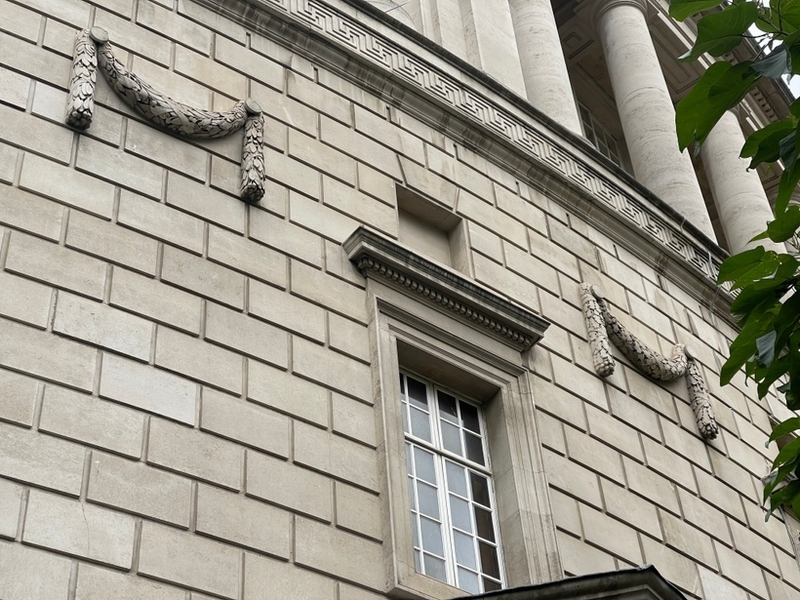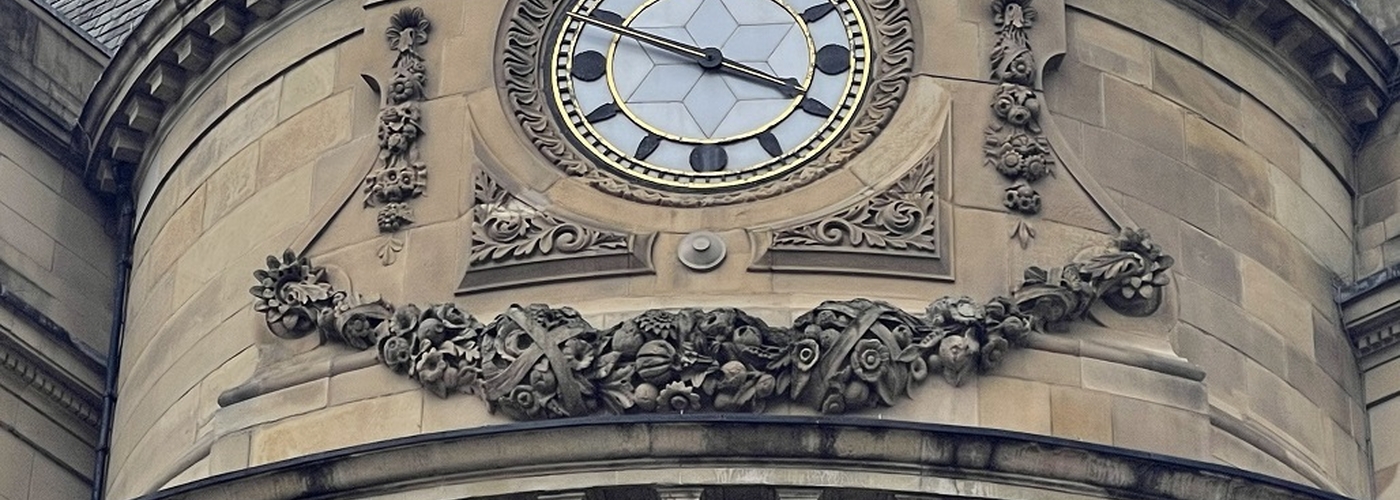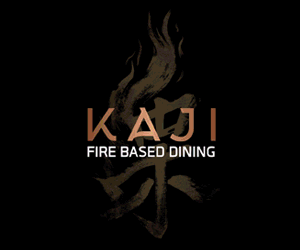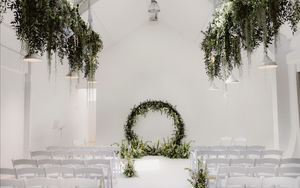Jonathan Schofield and an occasional series on fascinating details on Manchester buildings
Love Manchester architecture? Catch up on the first article in Jonathan's series, which looks at oriel windows.
Festoon me, festoon us, it’s a party. It’s like Hawaii. Garlands, dripping flowers, fruit too maybe, textiles often, of course. This is Manchester.
Whether it’s Classical Greece or Rome or even Hawaii, or in neon strung over a wedding reception in Burnley, a garland, festoon, swag, call it what you will, is all about celebration, ebullience and the desire for good fortune.
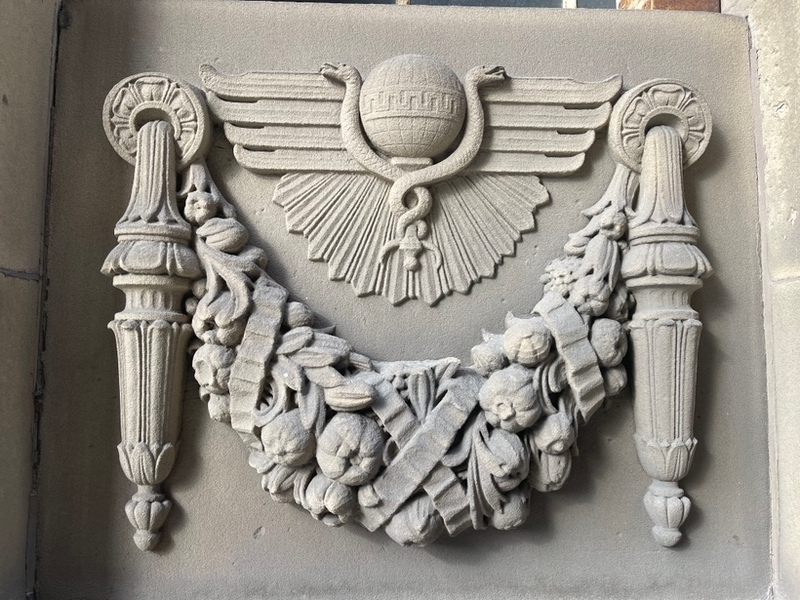
In Western architecture, emanating from Greece and Rome, it’s all about jolliness mixed up with slaughter. When beasts, often oxen, were led off to sacrifice to see if their innards could provide an auspicious guide to what was coming along they were celebrated and festooned, in other words covered in garlands. They might after all show the gods were happy and all was well with the world. Through the medium of their oxen livers.
In architectural terms when used as decoration on a building they are bucrania, usually an ox skull with a festoon or garland around its neck. 'Bucrania' derives from the Latin words 'bos' (bovine) and 'cranium'.
On Heaton Hall in north Manchester there are bucrania used as part of the display on the façade. If the gods are happy then there might be abundance and plenty. The 23-year-old Sir Thomas Egerton was feeling good when he had James Wyatt design the building. He was just married, in love, had come of age and had inherited a vast estate. Abundance and plenty.

Then in the nineteenth century and early twentieth century festoons ballooned. The swagger was back big style.
As an aside, there is a technical difference between a festoon and a swag. A festoon is usually flowers and fruit, swags are usually textiles. Both normally have a two hang points with the inverted arch droop in the centre and a couple of vertical falls off the hang points. You can call them either moniker when textiles, flowers and fruit are on one drop.
In that nineteenth century and early twentieth century period of corporate wealth and pride in the virtue of commerce, especially when most companies were owned locally, regionally, nationally, but in the UK scarcely ever by overseas companies, festoons and swags were a symbol of identity and strength.
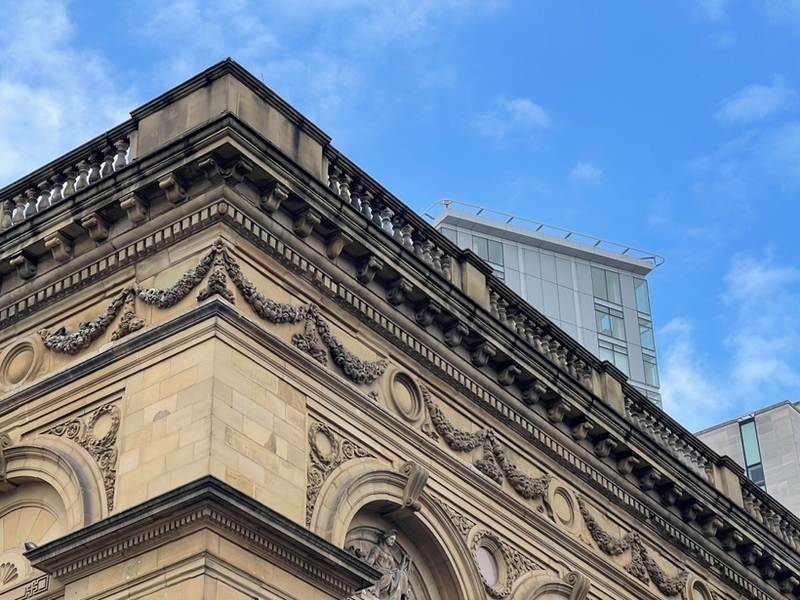
The UK was abundantly festooned. Few (although some did) had any idea the British 'Imperium' wouldn't last. There's some irony here as festoons and swags came down to us from the Roman Empire where few (although some did) had any idea that their empire wouldn't last either. The title image on this article (above) is of the overblown, slightly preposterous, festoon on the Royal Exchange building. It's probably 14ft (4m across).
Festoons and swags by the nineteenth century were all about showing off. In a sense they always had been, they are, after all, decoration for decoration sake. Pure bombast. Both were used on the inside of buildings too. The strangest of these in Manchester are those in the boardroom of the Refuge Assurance, now the Kimpton Clock Tower Hotel, for while they appear solid, they are in fact swags made out of pure painted textile.
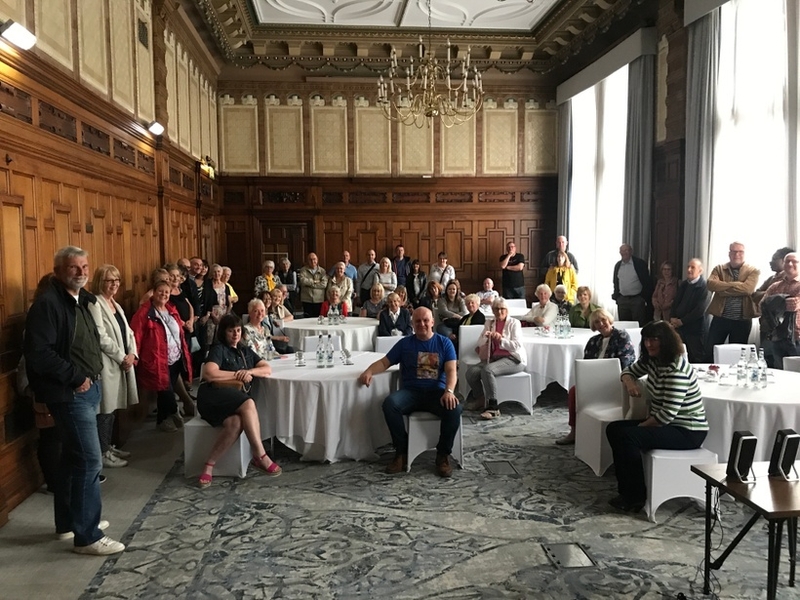
Speaking of the Kimpton Clock Tower Hotel, aka The Refuge Assurance, you could, by this time have the freedom to take a festoon, go mad with it and circle a whole huge clock.
This completes a nice return to the opening paragraphs of the article. At the Refuge, if you forgive the pun, the clock has been turned back and the ‘garland’ festoons the whole clock as it did the neck of those poor oxen in Classical times before they were slaughtered. Although in the case of the Refuge it wasn't about hoping there might be a supernatural sign of good times ahead, it was that the good times were here: well, as long as you invested in the Refuge Assurance. Nothing sacred then, just the solid secular virtues of mutual benefits involved with the investment of dosh.
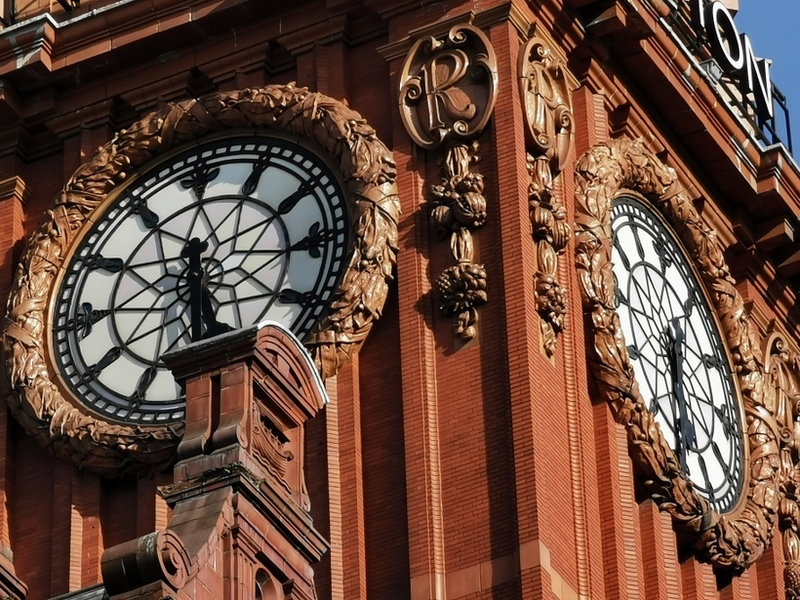
Of course, designers are designers and they get bored of copying, so during that fascinating period of architecture around the turn of the nineteenth into the twentieth century some architects and clients allowed festoons and swags to break free. The most liberated in Manchester are on the magnificent Art Nouveau terracotta facade on St George’s House, the former YMCA, from 1910 by Woodhouse and Willoughby on Peter Street. These just drip vertically down. They are wonderful.
Festoons, swags and garlands in the Bauhaus, International Modern, Post-Modern and contemporary styles are almost entirely absent, certainly in the UK and Europe. They were/are literally out of fashion. Perhaps these ebullient signs of empire and ostentatious wealth are a little too out there for a more worldly-wise age.
Although I bet there are a few in Dubai. Ostentatious wealth and all. Oops, I've forgotten there are some latter-day festoons in Greater Manchester. The Trafford Centre architects with that mess they call architecture just couldn't help themselves could they?

